How to do squats: Tips and guidance for beginners
Learn how to do squats to build your lower body muscles

Matt Evans
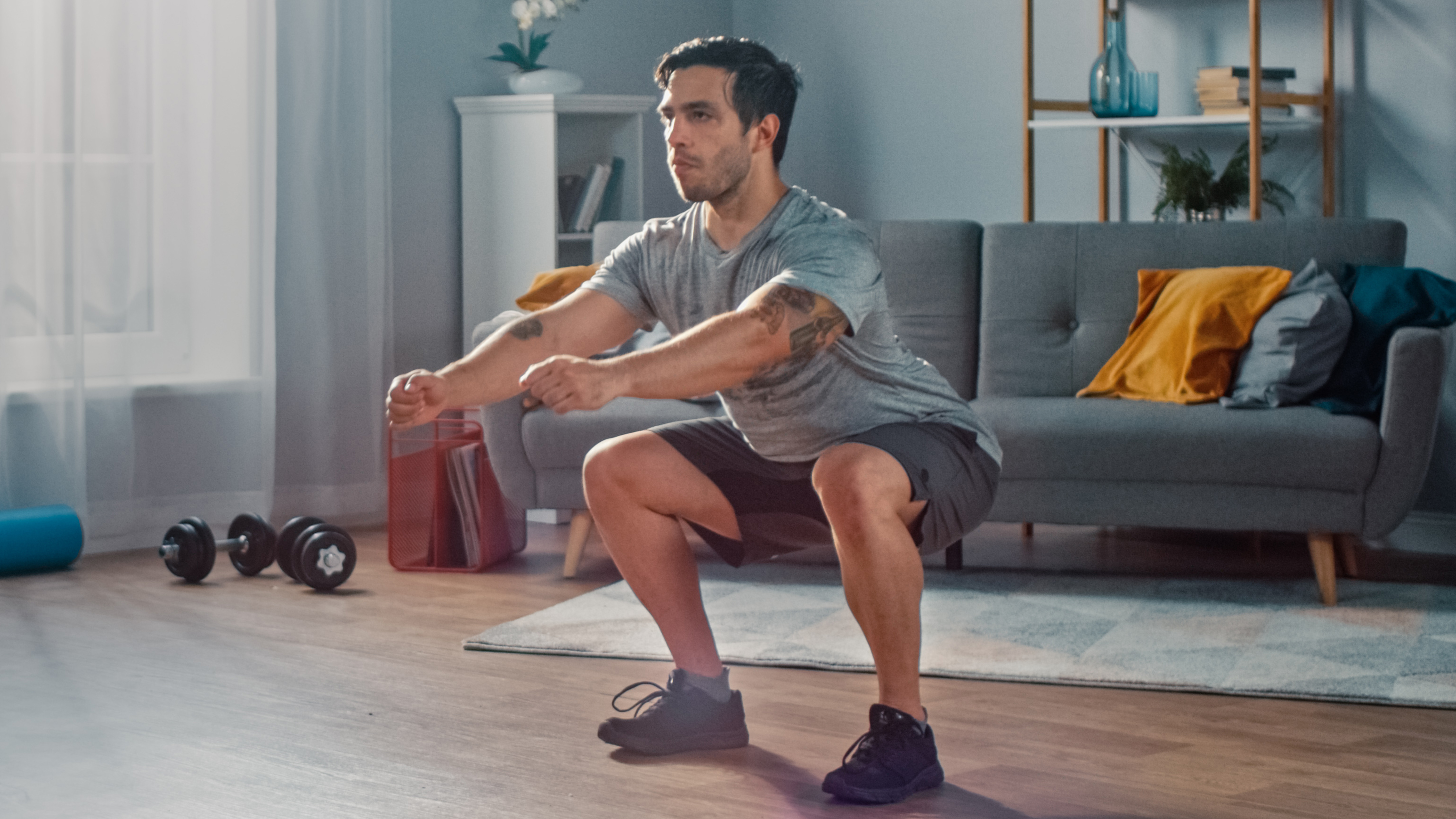
If you want to build a fit and functional body, it’s worth learning how to squat properly. The exercise is a fundamental human movement pattern, which crops up again and again in beginners’ bodyweight workout plans and advanced routines alike.
Take note: you should master the basic equipment-free variation of the move first. Once you have this nailed, you can attempt things like barbell squats, goblet squats and deep squats, each of which has its own particular set of squat-related benefits.
Doing regular squat workouts will strengthen your glutes (butt muscles) quads and hamstrings (thigh muscles) and hip flexors. Keeping these areas fit and functional will boost your sporting performance and make everyday activities feel easier.
Want to get started on this simple yet essential move? Follow our guide below and check out our form tips.
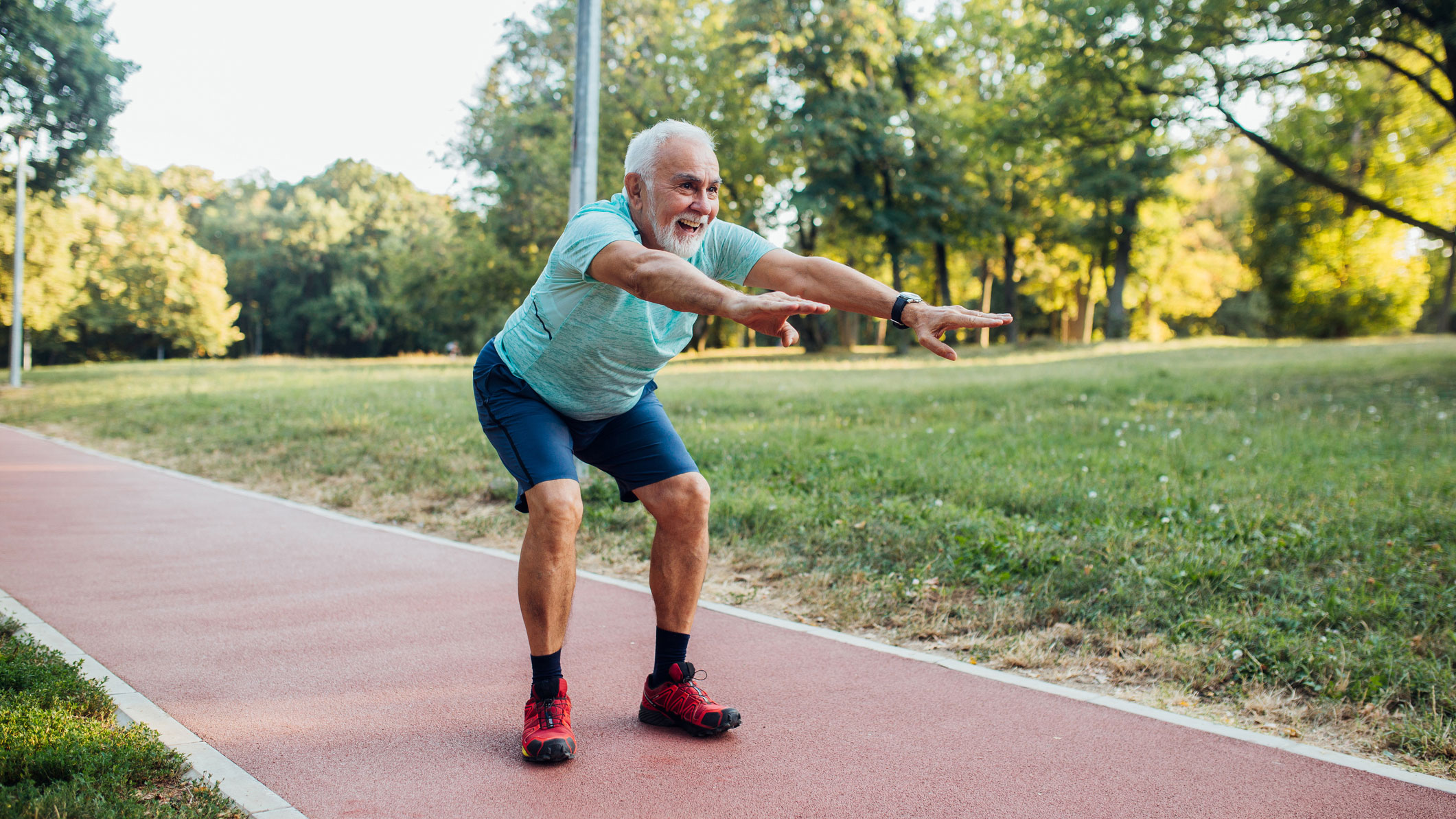
How to do squats
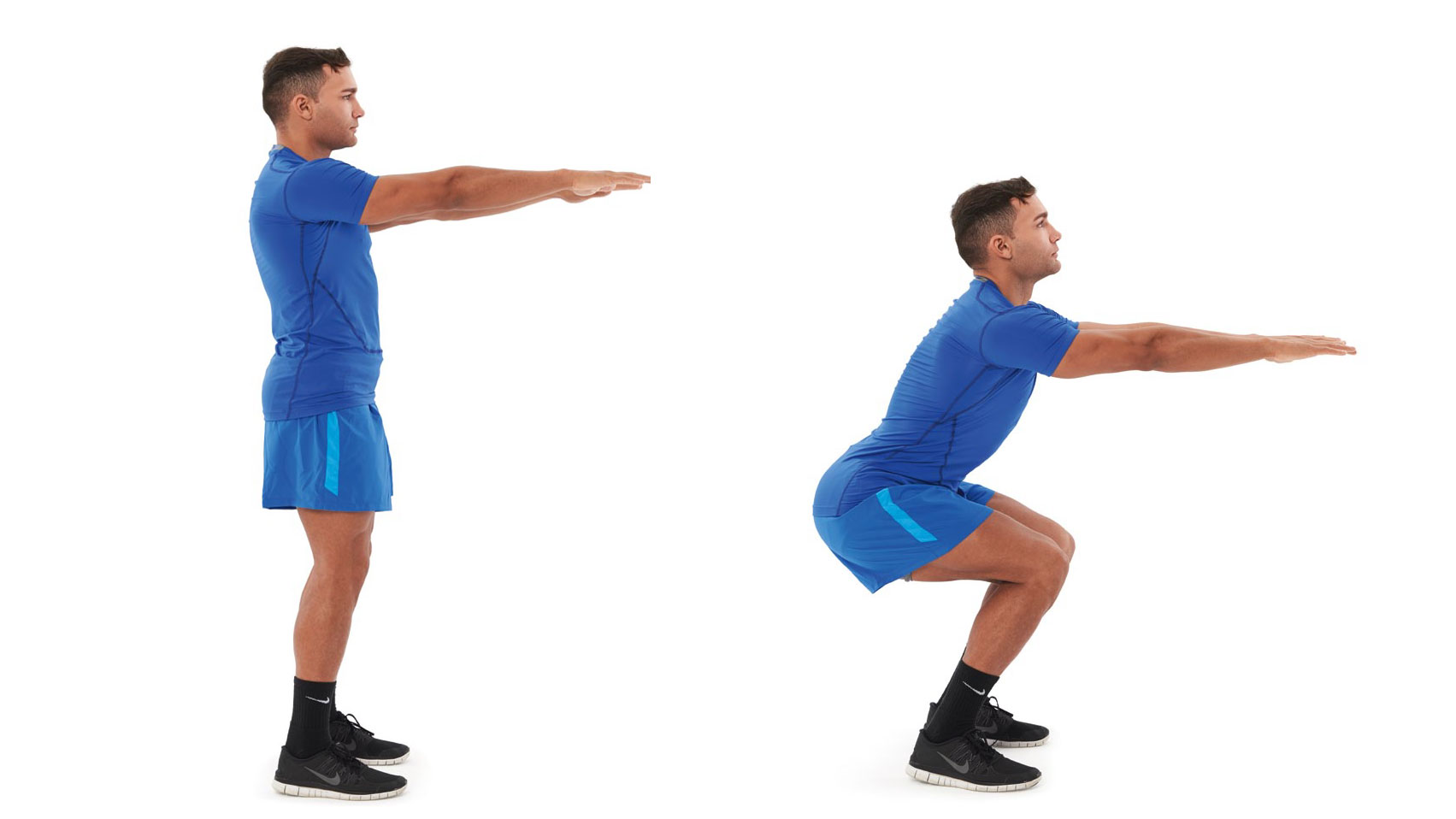
Squats can easily be scaled up and down, depending on your experience and capacity. But first, let’s start with the basic bodyweight squat, also known as an air squat. Mastering good form here will translate to safe progressions later.
- Stand tall with your feet roughly shoulder-width apart with toes pointing slightly outward (think 10am and 2pm). Arms can be held out in front, palms together, crossed across the chest or hanging to the side—wherever is comfortable for you
- Slowly lower your butt as far as you can while keeping your weight on your heels and your knees pointing outward.
- Pause when your butt and hips reach parallel to the ground or lower.
- To return to standing, push through the feet keeping the torso upright. .Throughout the exercise, your core should be braced and your chest open and facing forward
How to do squats: Common bodyweight squat mistakes
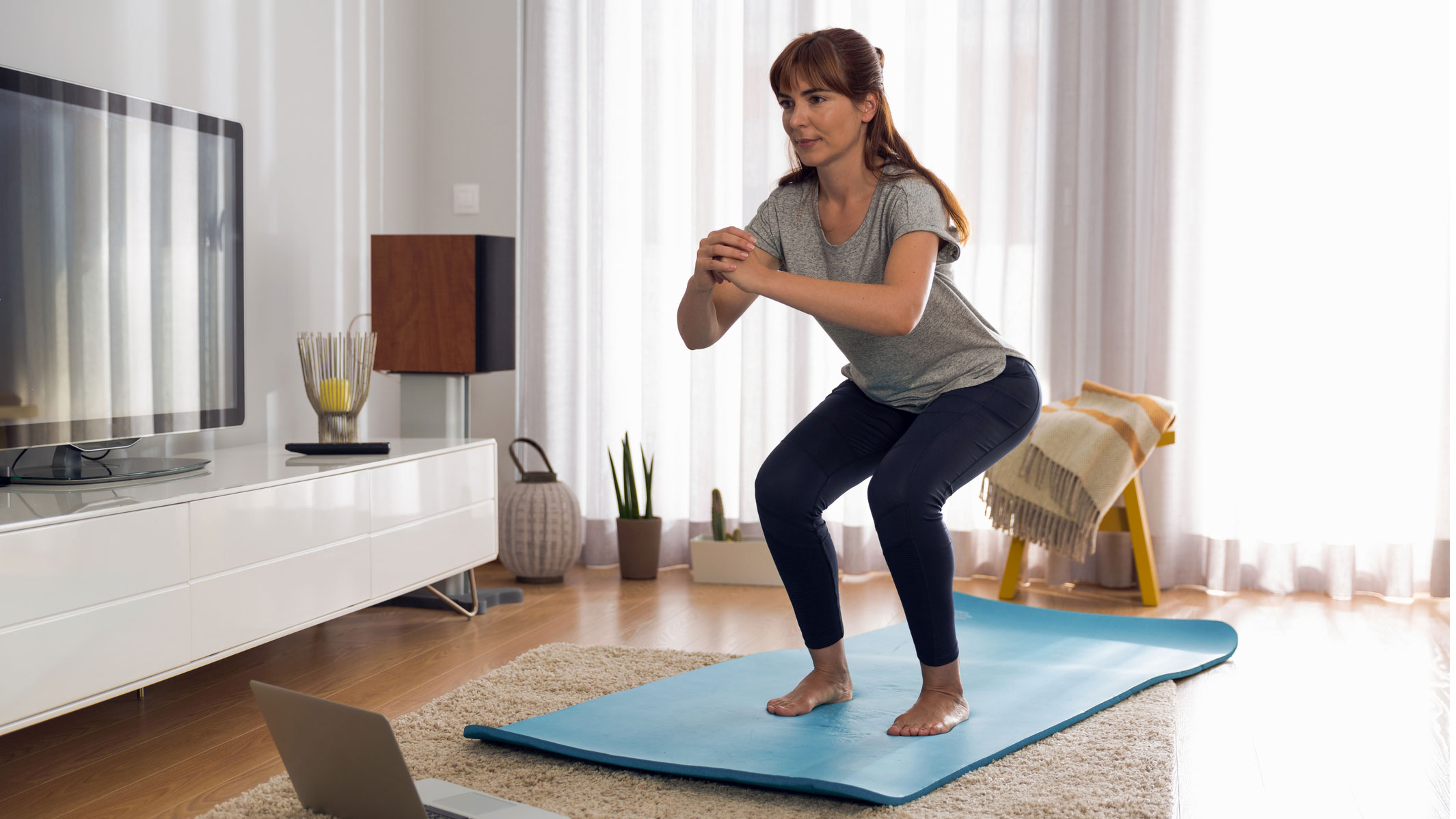
Don’t let pitfalls get in the way of perfect form. Here are a few common errors and how to fix them.
Feet
Start your week with achievable workout ideas, health tips and wellbeing advice in your inbox.
A good squat begins in the setup. A stance that’s too wide or too narrow can affect how deep you squat as well as the safety of your knees.
With feet too close, your range of motion will be restricted and you might struggle to squat low enough. Your knees will also be at risk of caving inward and your chest collapsing. Nudging your feet slightly further apart will allow more space for your hips to sink more comfortably below parallel.
If your feet are too wide apart, your adductors (muscles in the inner thighs) might feel strained and hinder you from hitting depth.
Positioning your feet just outside shoulder-width apart is the best position then adjust as necessary for your body.
Chest
A rounded back and shoulders are another common issue, which pulls your chest downward. The aim is to keep the torso upright so your chest is facing forward as you descend and stand up. This will also keep the spine in a straight and neutral position. Bracing the core and thinking of the cue, ‘chest up’, will help you achieve a more upright position.
Variation: Bodyweight squat jump
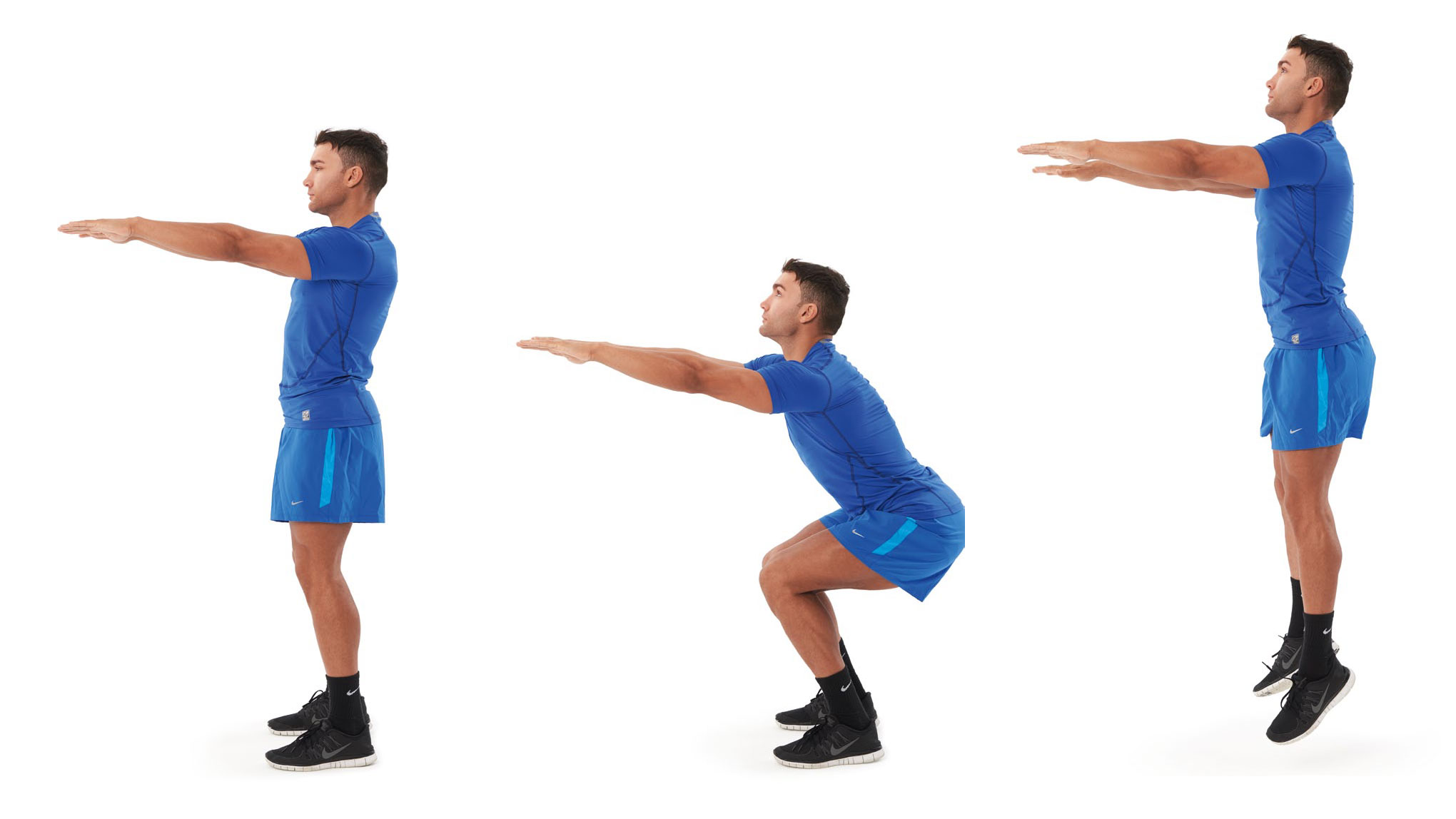
This variation on the bodyweight squat adds in a jump for a more intense cardiovascular workout. If you mobility allows, squat as low as you can before jumping.
- Stand in your bodyweight squat stance then push back your hips and lower your hips, bending at the knees.
- Once in a squat position, dynamically jump upwards driving hard with your legs and aiming to get as high as you can. Your arms should remain straight and may swing up in front of you to create momentum.
- As soon as you land, control the landing so you gently descend back into a squat position again, lowering your arms to the sides ready to jump again.
Variation: Goblet squat

The goblet squat is your next step up from a bodyweight squat. It’s a great way to add weight and intensity to improve your strength and form before progressing to barbell squats.
- Plant your feet just outside shoulder-width apart with feet pointing outward.
- Hold a weight with both hands in front of your chest. Keep the weight close to your chest under your chin.
- Breathe in and push your hips back and down, bending at the knees while keeping them wide and coming down to parallel or just below. Don’t let your knees cave in.
- Drive back up to your standing position as you breathe out, keeping your abs engaged throughout.
Variation: Split squat
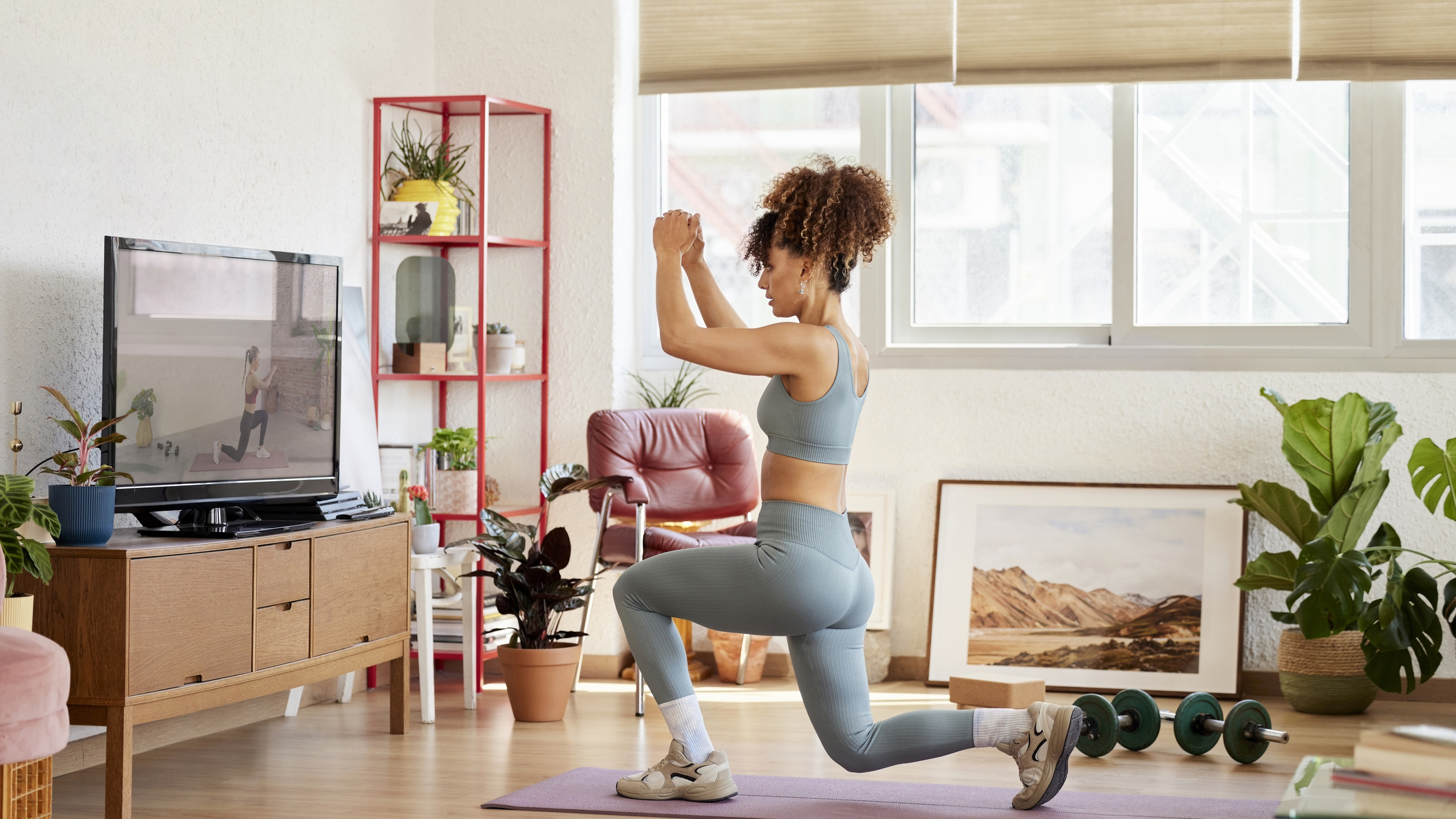
This squat variation puts your legs in a staggered stance making it a unilateral move (working one leg at a time). This will challenge leg strength and core stability.
- Start with your feet shoulder-width apart and take a step backward with one leg, keeping the heel raised so you’re resting on the ball of your foot.
- Breathe in and lower your back knee so it just touches the floor while flexing your front leg at the knee. This will look similar to a lunge position.
- Exhale to drive back upward using your quad and glutes. Keep the abs engaged with an upright torso and neutral spine throughout.
Want to take your squatting to the next level? Check out our guide on how to do barbell squats to add additional weight to this lower-body power move.

Yanar Alkayat is a health and fitness editor, registered yoga therapist and level 3 personal trainer. She founded Yanar Mind & Movement alongside her journalism to offer specialist yoga therapy for people living with long-term health conditions, movement disorders and marginalised communities. Her chair yoga classes are funded by Parkinson's UK and she regularly runs yoga and fitness for refugee and asylum seeker groups in London. Formerly a content editor and fitness product testing manager at Women’s Health, Men’s Health and Runner's World, she continues to write for national print and digital media.